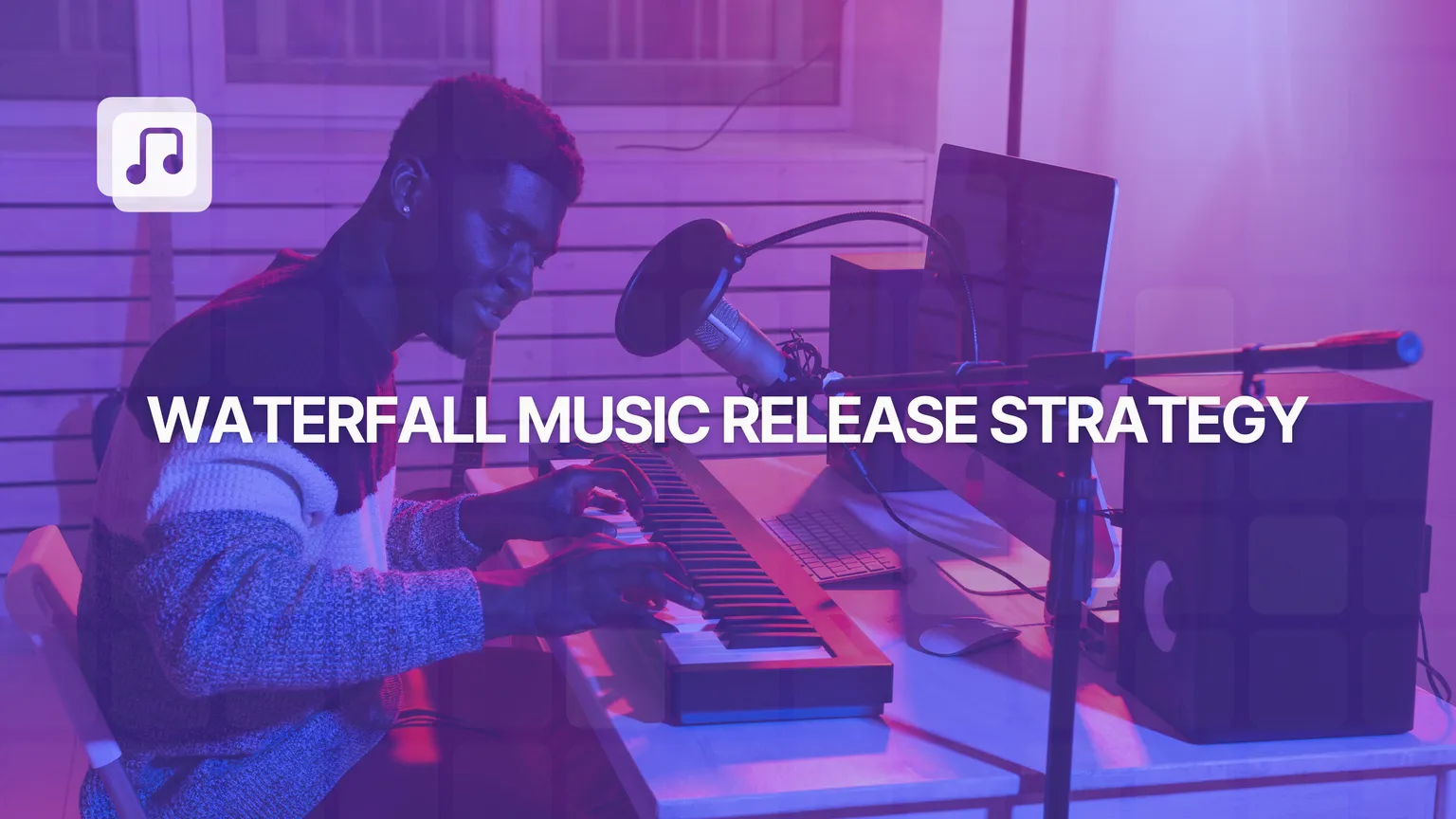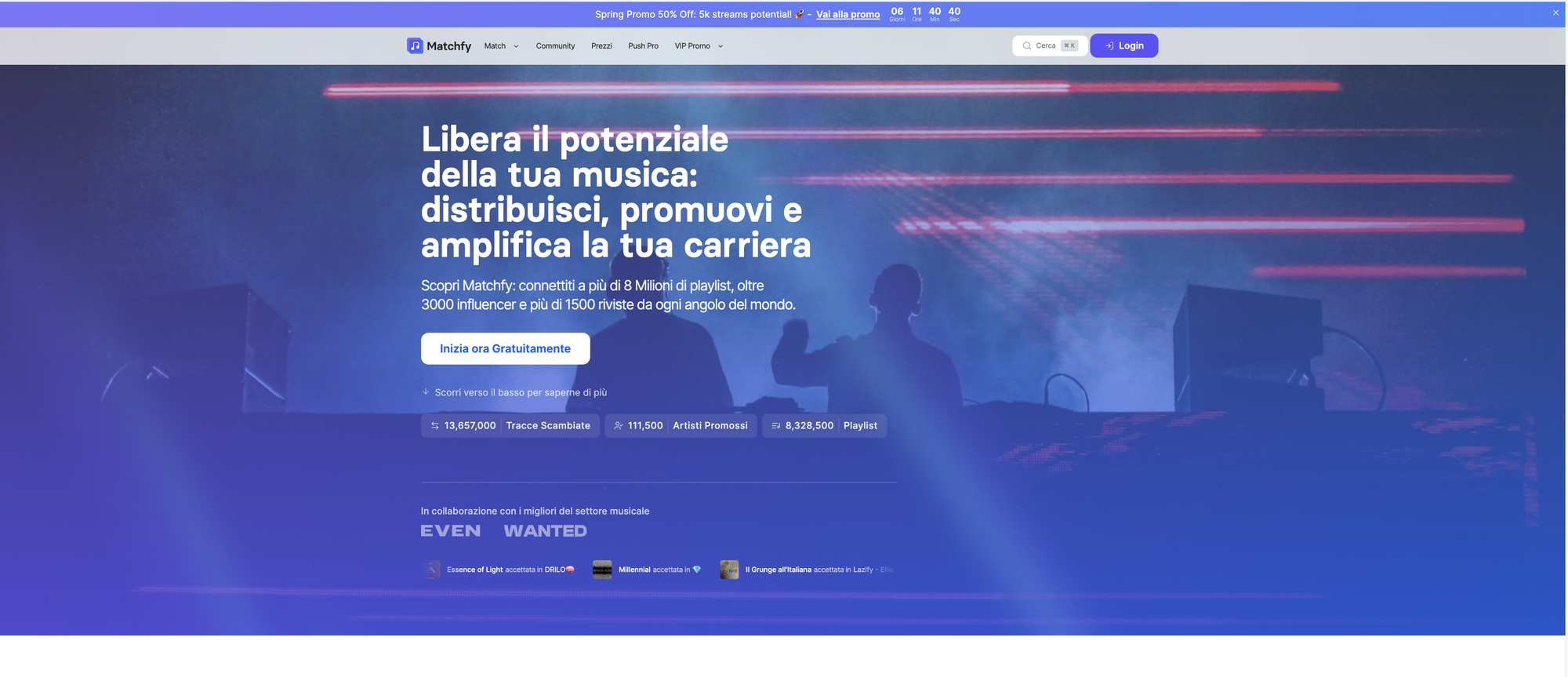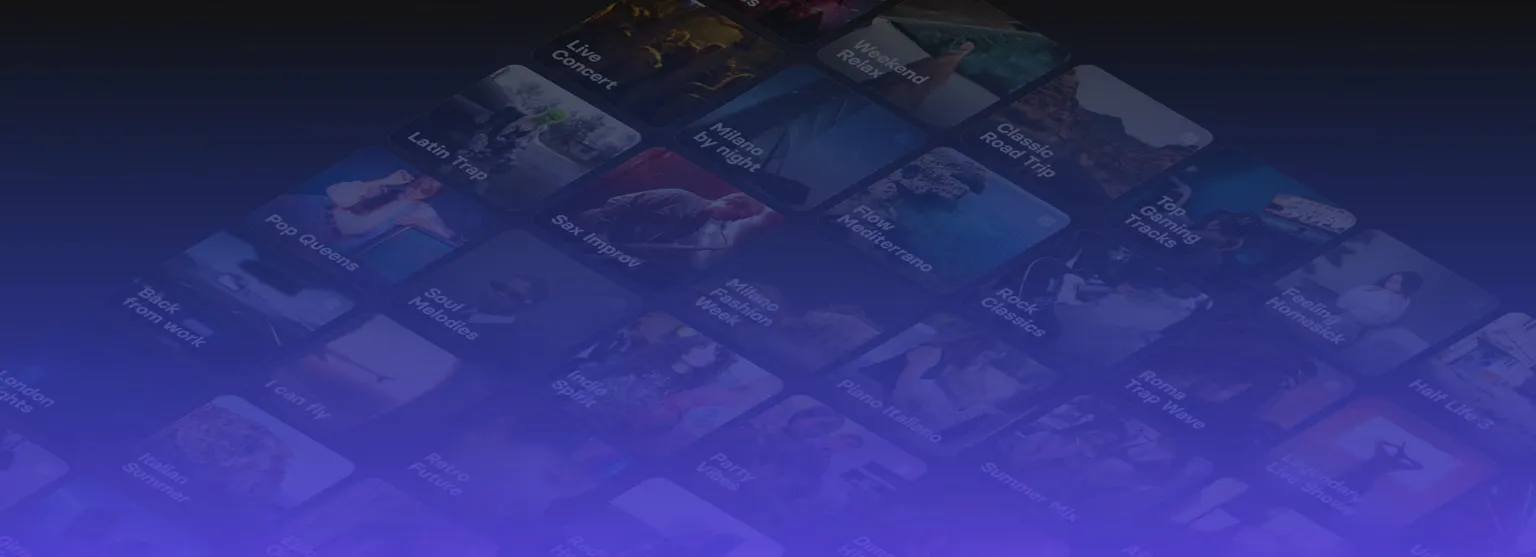Waterfall music release strategy: how to build long-term impact with a smart release plan

Releasing music in today’s fast-paced digital world requires more than just talent: it demands strategy, timing, and consistency. One of the most effective approaches to keep your audience engaged and build momentum over time is the Waterfall Release Strategy.
While the term “waterfall” is often associated with software development, this strategy has been increasingly adopted by independent artists, music marketers, and labels as a way to extend the life of a project, boost streaming numbers, and build a growing fanbase in a structured way.
In this article, we'll explore what the waterfall release strategy is in the music industry, how it works, why it’s so effective, and how you can use it to amplify the impact of your songs.
What we're going to explore:
- What exactly is the waterfall release strategy?
- The key benefits of waterfall release strategy
- Challenges and limitation of waterfall strategy
- Why should you use the waterfall release strategy
- How to launch a waterfall release step by step
What exactly is the waterfall release strategy?
The waterfall strategy in music refers to a staggered release method where an artist drops a series of singles over time — typically one at a time — and each new release includes the previous tracks as part of the package. This way, every time a new single is released, it becomes part of a growing bundle, which gradually leads to a full EP or album.
Let’s say you have a 6-track project. Instead of releasing it all at once, you drop track 1 in week one. A few weeks later, you release track 2 — but instead of uploading it alone, you release it with track 1 included. Then track 3 comes out with tracks 1 and 2 bundled in, and so on, until all 6 songs have been released.
This strategy creates a kind of snowball effect: each new release adds value to the previous ones and gives your catalog more visibility, especially on streaming platforms like Spotify or Apple Music.
Not sure what steps to follow to release your music? Find out more by reading the guide on our blog!
The key benefits in a waterfall release strategy
There are several compelling reasons why the waterfall approach is gaining traction in music marketing:
1. Extended exposure for each song
Rather than having all your tracks land at once and compete for attention, this strategy allows each song to shine individually, giving fans time to connect with it before the next drop.
2. Boosted streaming numbers
Since every new release includes the previously released tracks, you accumulate streams across multiple drops. This repetition signals popularity to streaming algorithms, helping your songs reach more listeners via editorial playlists or algorithmic suggestions.
3. Continuous content for your audience
A consistent release schedule keeps your fans engaged and gives you regular moments to post on social media, send newsletters, or run ads. Instead of promoting one big release for a week, you create multiple engagement opportunities over several months.
4. Playlist optimization
Spotify and other platforms often treat each new single as a “fresh” release, even if the previous tracks are bundled in. This means more chances to get playlisted, something that doesn't usually happen with a traditional album drop.
5. Stronger algorithmic momentum
With every new drop, listeners go back and stream the older tracks included in the bundle. This helps boost your overall profile, listener retention, and can increase your chances of appearing in Discover Weekly, Release Radar, and other algorithmic playlists.
For example, The Chainsmokers’ 2018 album ‘Sick Boy’ was released by using the waterfall approach. Throughout the year, each month (apart from May and June), a new single was released with the full album having come out in December 2018.

Challenges and limitations of the waterfall strategy
While powerful, the waterfall release strategy isn't without its caveats. It’s important to know what to expect:
- Requires planning and discipline: To make it work, you need a solid calendar, good visuals, and a consistent promo plan. You can’t wing it week by week.
- Not ideal for every genre: Some genres or fanbases prefer full-length albums or cohesive storytelling, where splitting up the music might hurt the artistic experience.
- Metadata and distribution management: You'll need to carefully organize your releases and metadata across platforms to avoid duplication, confusion, or wrong playlist placements.
- Creative burnout: Promoting a new track every few weeks can be demanding. Be ready with assets like cover art, social content, and videos to keep up the energy.
In the music industry, music metadata plays a critical role in ensuring that your music is properly identified, cataloged, and distributed. Want to know more? Read the full article.
Why should you use the waterfall release strategy
The waterfall release strategy works particularly well for:
- Independent artists trying to grow their presence organically on streaming platforms.
- Emerging musicians with limited budgets, who want to stretch a campaign over time.
- Artists with multiple strong singles that can stand alone but also work together as a project.
- Genres that thrive on singles, such as pop, hip-hop, electronic, or Afrobeat.
On the other hand, if you're dropping a concept album where every track flows into the next, or if your fans expect a full narrative in one sitting, a traditional album drop may be a better fit.
How to launch a waterfall release step by step
If you’re ready to try the waterfall model for your next release cycle, here’s a simple framework to follow:
1. Choose the right songs
Select 3 to 6 tracks that can work as singles and will sound good together as a project.
2. Plan a release calendar
Space out each drop by 3–4 weeks. This gives each track breathing room and time to build momentum before the next one lands.
3. Build a story around each release
Think of each single as a standalone chapter. Create a narrative, visuals, or theme that ties them together — but make sure each drop has its own identity.
4. Bundle previous songs with each new release
Each time you release a new track, include the previous one(s) in the bundle. This is crucial for streaming algorithms and playlist opportunities.
5. Promote every drop like it’s a big deal
Treat each release as a moment: run ads, pitch to playlists, make videos or lyric reels, and engage with fans directly.
6. Cap it off with a full project
Once all songs are out, you can package them into an EP or album and promote it again, now with a stronger foundation of streams and followers.
The promotion process is just as essential as the release itself if you want your music to reach the widest audience possible and that’s exactly why Matchfy exists!
Our platform is designed to help artists grow their streams organically by promoting their music through playlist placements and social media exposure.
Learn how to promote your music the right and efficient way by starting your journey with Matchfy today!

Make every release count
In today’s competitive digital music landscape, releasing great music is only half the battle. How you release and promote it can make the difference between getting lost in the noise and building a lasting connection with your audience. The waterfall release strategy offers a smart, sustainable way to stretch the lifecycle of your music, maximize visibility on streaming platforms, and keep your fans engaged over time.
But even the best release strategy needs the right promotional support. That’s where Matchfy comes in.
As you roll out your singles one by one, Matchfy helps you amplify their reach through targeted playlist placements and strategic social media promotion, all designed to grow your streams organically and connect your music with listeners who truly care. Whether you're an emerging artist testing your first waterfall campaign or an experienced musician looking to boost your presence, Matchfy gives you the promotional engine to back your strategy.
So if you're planning to launch a waterfall release for your next project, don’t stop at distribution. Give your songs the visibility they deserve.

